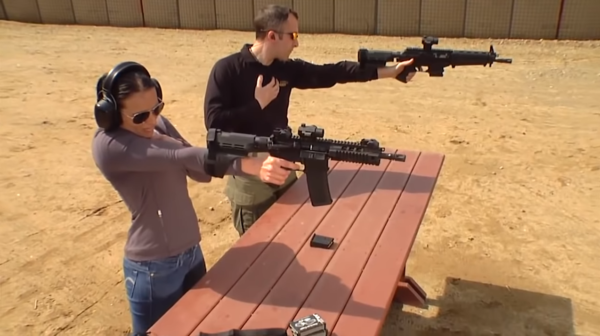
By Dave Workman
Editor-in-Chief
A three-judge panel for the U.S. Fifth Circuit Court of Appeals has granted a temporary injunction blocking the Bureau of Alcohol, Tobacco, Firearms and Explosives from fully enforcing a new rule on pistol braces, pending appeal, in a case known as Mock v. Garland.
The new arm brace rule was scheduled to take effect within days, requiring owners to either register the accessory devices, destroy them or remove them from the semi-auto pistols to which they are attached. The deadline for compliance was May 31. The injunction order may be viewed here.
According to Fox News, the Firearms Policy Coalition brought the case to the Fifth Circuit after a lower court judge in Texas declined to enjoin the ATF from enforcing the rule while the case makes its way through the courts.
The controversy erupted earlier this year because the ATF allegedly flip-flopped on what had been a long-standing acceptance of the brace as a shooting accessory, used by millions of shooters—especially those with disabilities—which was perfectly legal. But in mid-January, ATF finalized its rule, which now defines pistols with braces as “short-barreled rifles.” Such firearms come under federal regulation.
As noted by Fox, “The stabilizing brace rule was introduced as part of the comprehensive gun crime strategy (President Joe) Biden announced in April 2021 in response to the massacre at a grocery store in Boulder, Colorado, where a gunman used a firearm with a stabilizing brace to kill 10 people. In 2019, another mass murderer used a stabilizing brace in a shooting in Dayton, Ohio, that killed nine people.”
Gun rights activists saw the move as another manifestation of President Biden’s ongoing war on guns. He has campaigned to ban so-called “assault weapons” and even mentioned 9mm pistols as another firearm he would like to see prohibited for private citizens.
Stabilizing braces attach to the rear of semi-auto pistols, typically built on an AR-type frame. Because such pistols typically have barrels shorter than 16 inches, if someone utilizes the brace like the buttstock of a rifle, the ATF considers the firearm to be a short-barreled rifle.
In a prepared statement, attorney Cody J. Wisniewski, senior attorney for Constitutional Litigation at FPC Action Foundation, said, “We are very excited and encouraged by the Fifth Circuit’s decision this morning. We intend to ask the Court for additional information about who is covered under the injunction, but cannot stress enough just how important this decision is. The fight is far from over, but this is a huge victory in the battle against the ATF’s unconstitutional and unlawful brace rule.”
The court order appears to apply only to plaintiffs in the case, but it is not clear whether it applies to other gun owners.
According to Fox, there are “at least three million guns with stabilizing braces,” based on an ATF estimate. There may be far more braces in circulation, possibly between 10 and 40 million, according to estimates from the Congressional Research Service mentioned in the Fox report.



